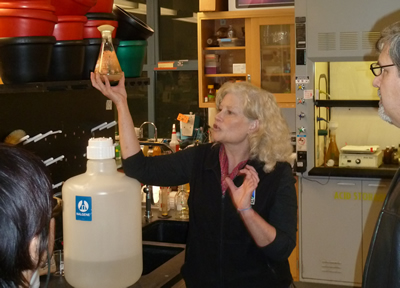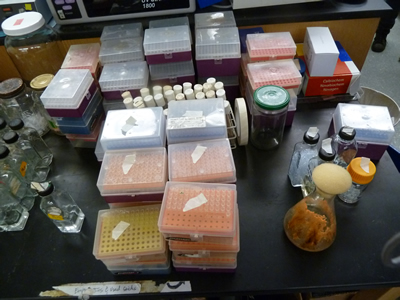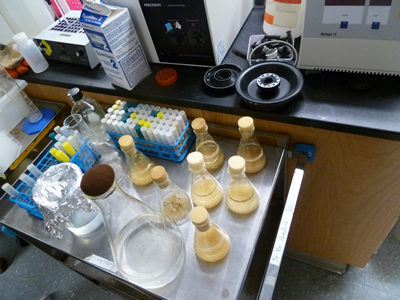BAMS Meeting Recap | March 9, 2011
Fungal Communication and the Formation of Hyphal Networks
Louise Glass, PhD, professor in the Department of Plant and Microbial Biology at UC Berkeley, presented: "Fungal Communication and the Formation of Hyphal Networks." In January, Dr. Glass was awarded a fellowship from the Adolph C. and Mary Sprague Miller Institute for Basic Research in Science.
Hyphal interconnected networks is a hallmark of the growth habit of filamentous ascomycete and basidiomycete species. Glass has been working on the mechanisms of how fungi form an interconnected hyphal network and in understanding the benefits (nutrient translocation, organelle translocation, colony interactions, developmental coordination) that are associated with network formation.
Glass Lab, UC Berkeley ![]()
Interview in Nature, "Turning Point: Louise Glass" 
Dr. Glass receives prestigious Miller Award 
What a great meeting last night, the first but perhaps not the last cooperative event between the San Francisco Microscopical Society and BAMS. Our cozy seminar room was packed with folks, and Louise gave a wonderful presentation, her first ever to a non-university/professional audience: accessible, interesting and with plenty of great visuals, including movies!
Dr. Glass started the evening with a look at her Koshland Hall lab. BAMS and SFMS members packed into the narrow corridors, up against that way cool Ultra Low Freezer (-83° C) and lab benches awash in beakers, bottles and other fungally cultural events. It turns out that the new cytological labels are fluorescent rather than radioactive, and there is even a special microscope for viewing fluorescent marked slides — a big beautiful Zeiss.

Dr. Glass holds up beaker of Neurospora crassa colonies.
Her fungus of interest is the ascomycete Neurospora crassa, one that appears in all of its orange glory on burned giant grasses like sugarcane. A similar species in that genus was also discovered by UC Berkeley researchers growing underneath the burned bark of pines at Tahoe after the recent fires.

Neurospora crassa beaker with lab equipment.
When brightly labeled living and growing hyphae are viewed through these fluorescent microscopes, you can see, through color changes within the hyphae, a "dialogue" if you will between hyphal threads. Louise called the two phases "speaking and listening."
The hyphae use this communication to sense both genetically related material with which to connect up with and create fungal networks, as well as communicate differences and avoidance behaviors, between both genetically different hyphae and growing hyphal tips. Hyphal tips are specifically designed to spread out and prospect for new food sources, and so exhibit avoidance behavior when confronted with other hyphae, even of the same genetic make-up.
She also demonstrated how fungal colonies create demarcations between species in woody substrates. When mistaken interspecies connections are created, they rapidly get walled off and die, preventing the spread of viruses between species. This is what creates a black line pattern in wood called "spalting."

Neurospora crassa beakers on cart.
Not only has Dr. Glass been researching methods of chemotropic fungal communication, but her lab is also looking at the production of bio-fuels in relation to some of these cellulose-degrading fungi.
As a final fungal note, Louise ran the Spores Spectacular movie of a jazz trio jamming with the fungal music of the spheres... spore drop from laser light, hooked up to various odd "instruments" ala a Rube Goldberg device, with a large audience of folks in the studio listening in, as well as observing the movements and light play. Nice to see it on a big screen and a whimsical end to a lovely scientific program.
Debbie Viess
